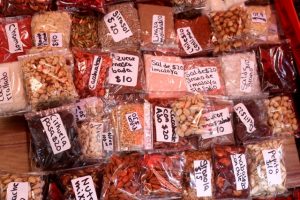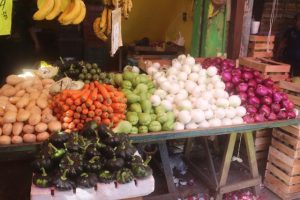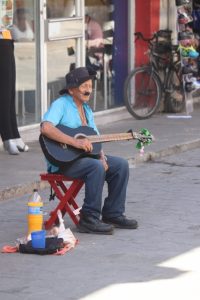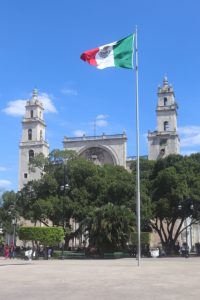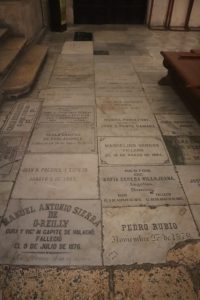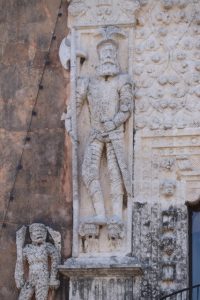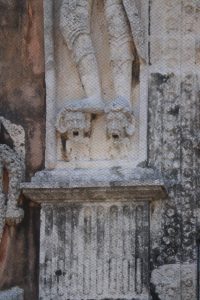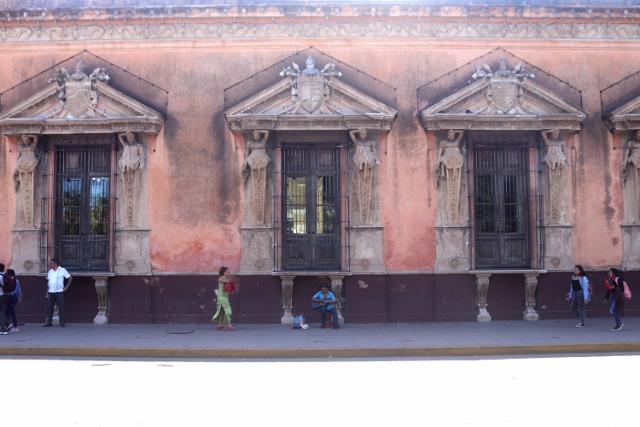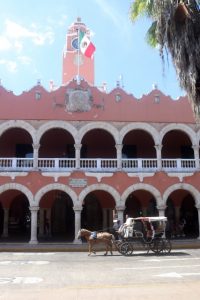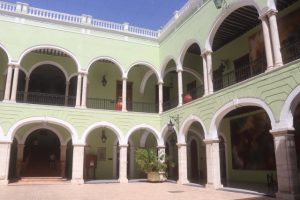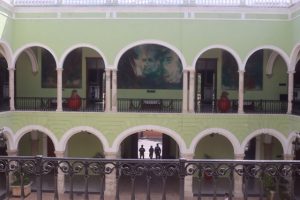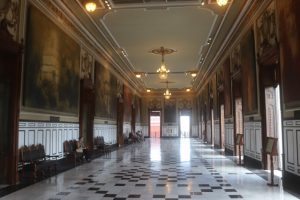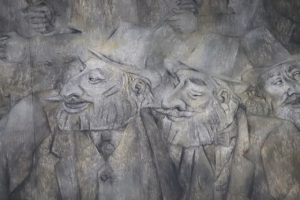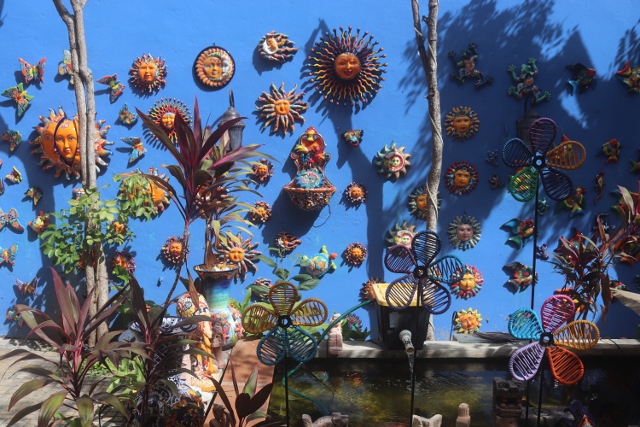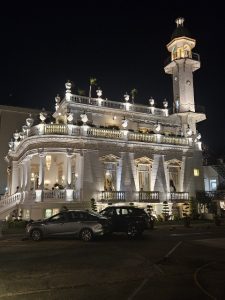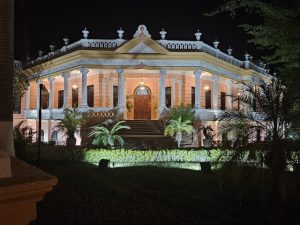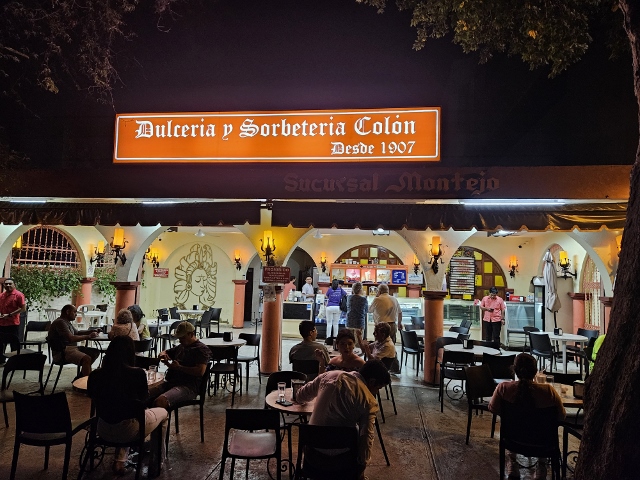Yucatan’s capital is Merida, a sizable city in its own right, with a quite attractive historical centre. We make our way to the Zocalo, the city’s central square, and we start our trip at the market south of here. This is supposed to be the biggest market in Yucatan, and indeed, we wander through a maze of stalls, selling all sorts of things, from food and drinks, plastics and Tupperware to colourful fruits and vegetables and wonderfully smelling spices. Somehow, spices here smell different, sweeter, from those in other markets, in Africa or Asia.
Outside the markets are more shops, in short pedestrian streets and under the colonnades of what looks like colonial structures. There is a lively atmosphere in town, not only in the shopping area, but also in the backstreets that are lined with simple, one story houses, protected by grills in the window. Some are well maintained, others are almost falling apart, but it looks a lot more real than the over-developed Calzado de Los Frailes in Valladolid.
Back at the Zocalo we admired the four sides, each with their own specific building. The San Ildefonso cathedral, with its two white bell towers, dates from the 16th Century, and apparently has been built on top of a Maya temple, as was customary at the time – this is how you demonstrated your superiority over the subjugated people. The church is not particularly attractive, the huge inside minimally decorated. Grave stones are testimony to the important citizens that were buried inside, in the 19th Century.
The most important building on the Zocalo is the Casa de Montejo, the oldest house in town, from the 1540’s – although now only the front entrance is original, the rest has been reconstructed at later dates. The front is especially remarkable for the frieze of Spanish conquistadores with their weapons, and the chopped off heads at their feet. The chief conquistador was Fernando the Montejo, who conquered the ancient Maya city of Tho, whose architectural remains made him think of the Roman ruins in the Spanish city of Merida; voila, the name for the newly built city. Apparently, the descendants of Montejo still lived in the house until the 1980s (!).
Next on the square is the pink-painted municipality building, not accessible, whilst on the fourth side is the Palacio de Gobierno, a green building with a colonnaded patio. The building itself is nice enough, but what makes it special are the extensive murals on the ground floor and upstairs, as well as the series of murals in a large hall in front. These have been painted in the 1970s by local artist Fernando Castro Pachego, depicting the history of the Mayas before, and especially after, the contact with the Spaniards. Very powerful images, most of them, well executed in an appealing style – also staying with a Mexican mural tradition from the 1930s of which I hope to see more once we get back to Mexico City.
One block away from the Zocalo is the Parque Hidalgo, with the façade of the Arte Nouveau-like Grand Hotel, and the much older, 17th Century Iglesia de Jesus, which, unfortunately, is closed. This one, too, was built on an ancient Maya temple.
On the way out, a little further from the centre, is the Paseo de Montejo, a stylish long street with several examples of early 20th Century houses, built for the rich sisal barons, the men who dominated the sisal production and trade, at the time called the ‘green gold’, which provided the wealth of Merida, and the greater Yucatan area. In the country side there are still several haciendas testifying to this once important product, that has since succumbed to industrial, artificial replacements. In the end we never managed to visit any of the haciendas, but the comparison with the caliche exploitation in Chile, and its early 20th C replacement by fertilizer, is inescapable.


